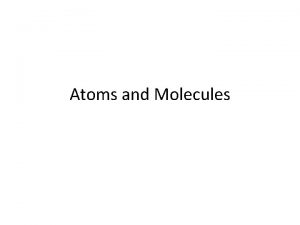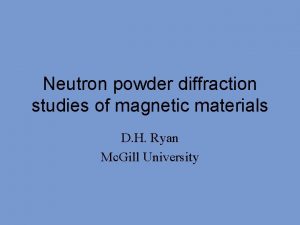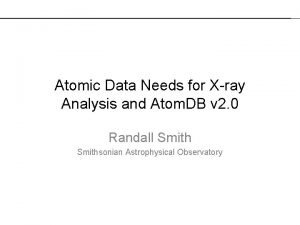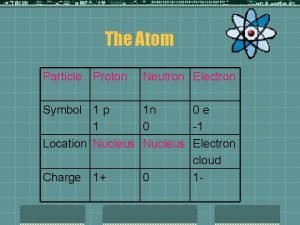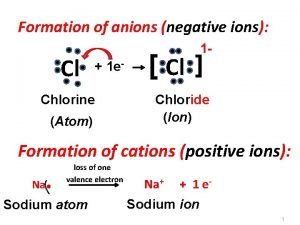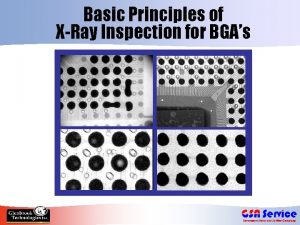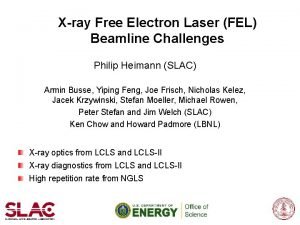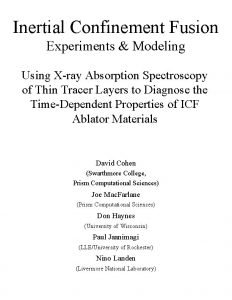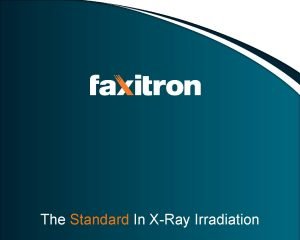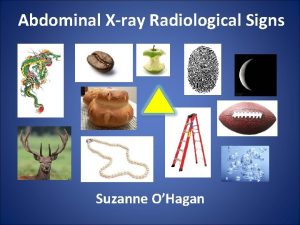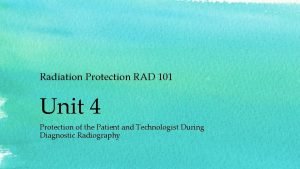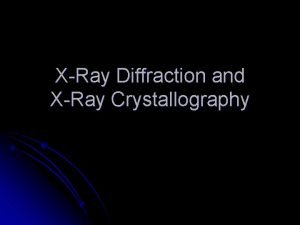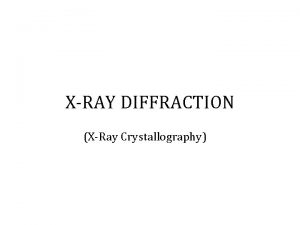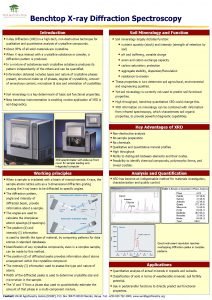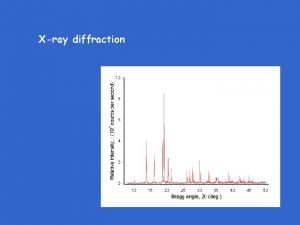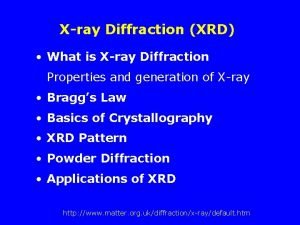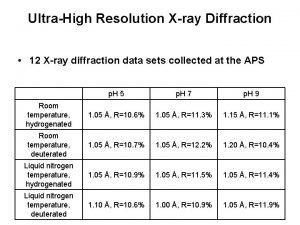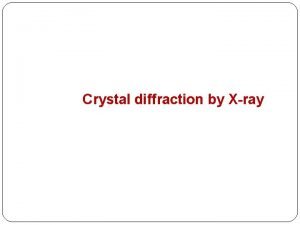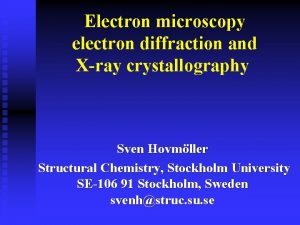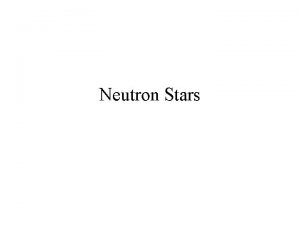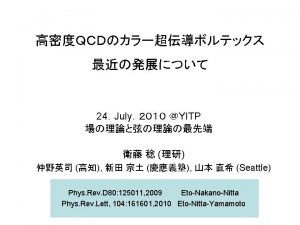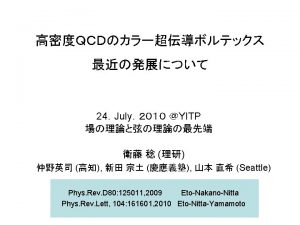Diffraction Xray Neutron Electron Diffraction An atom in


















- Slides: 18

Diffraction X-ray Neutron Electron

Diffraction • An atom in space will elastically scatter X-rays as a function of angle. • It will behave as a point source, but the intensity will decrease with angle. • The intensity is calculated from theoretical wave functions for the electron distribution and given as a polynomial expression called the scattering factor (f ).

Diffraction

X-Ray Diffraction • Atoms separated by distance d will scatter in phase when the path length difference is an integral number of wavelengths. • Path length difference B-C-D = nl • nl = 2 d sin q

Diffraction • Intensities can be calculated knowing the position and scattering characteristics of each atom. • Fhkl = square root of integrated intensity. • fj = scattering of atom j at angle 2 q • Atom j located at fractional coordinates y j , zj. x j,

Structure Factors • The structure factor, F, is the square root of the measured integrated intensity.

Structure Factors

Structure Factors • If, for every atom, j, at (xj, yj, zj), there is an identical atom at (-xj, -yj, -zj), • The imaginary term in the equation is zero.

Systematic Extinction • If, for every atom, j, at (xj, yj, zj), there is an identical atom at (1/2+xj, 1/2+yj, 1/2+zj), (body centering) • The structure factor is zero for h + k + l = 2 n+1 (h+k+l odd) for all hkl • So systematic extinction of structure factors tells us which symmetry operators are present

Systematic Extinction • Lattice centering Operations – For all hkl – F: hkl all even or all odd – I: h+k+l = 2 n – A: k+l = 2 n – B: h+l = 2 n – C: h+k = 2 n

Systematic Extinction • Glide planes – a glide – b-glide – n-glide – a-glide – c-glide – n-glide – b-glide – c-glide – n-glide normal normal normal to to to c: c: c: b: b: b: a: a: a: for for for hk 0, h = 2 n hk 0, k = 2 n hk 0, h+k = 2 n h 0 l, h = 2 n h 0 l, l = 2 n h 0 l, h+l = 2 n 0 kl, k = 2 n 0 kl, l = 2 n 0 kl, k+l = 2 n

Reciprocal Lattice • The reciprocal lattice is a mathematical construct of points each corresponding to a given Miller index, hkl. • It is a three dimensional lattice where the nodes are diffracted intensities and the spacing between points is inversely proportional to the unit cell parameters in real space.

Reciprocal Lattice • Reciprocal axes are denoted – a*, b*, c*, a*, b*, g* • For Orthorhombic – a* = 1/a ; b* = 1/b ; c* = 1/c • Scale is arbitrary

Wadsleyite Imma hk 0 a = 5. 7Å b = 11. 5 Å c = 8. 3 Å

Four-Circle Diffractometer

Four-Circle Diffractometer

Four-Circle Diffractometer

Diffraction Experiment • • • Mount Crystal (~100 mm) Rotation photograph Index and obtain matrix Refine unit cell parameters (1/104) Measure Intensities (1000 - 10000) Determine or refine atom position and displacement parameters
 Atom proton neutron electron
Atom proton neutron electron 642008419
642008419 Atom xray
Atom xray Symbol proton neutron elektron
Symbol proton neutron elektron Which number is protons on periodic table
Which number is protons on periodic table Electron diffraction experiment results
Electron diffraction experiment results Electron diffraction
Electron diffraction The formation of negative ions
The formation of negative ions How to read electron configuration
How to read electron configuration Kelemahan teori dalton
Kelemahan teori dalton The structure of the atom section 2 defining the atom
The structure of the atom section 2 defining the atom Bga xray
Bga xray Xray laser
Xray laser Inertia xray
Inertia xray Xray file cabinet
Xray file cabinet Cavernous sinus thrombosis
Cavernous sinus thrombosis The “doge’s cap” sign
The “doge’s cap” sign Capacitor discharge mobile x-ray units
Capacitor discharge mobile x-ray units Xray technique chart
Xray technique chart
